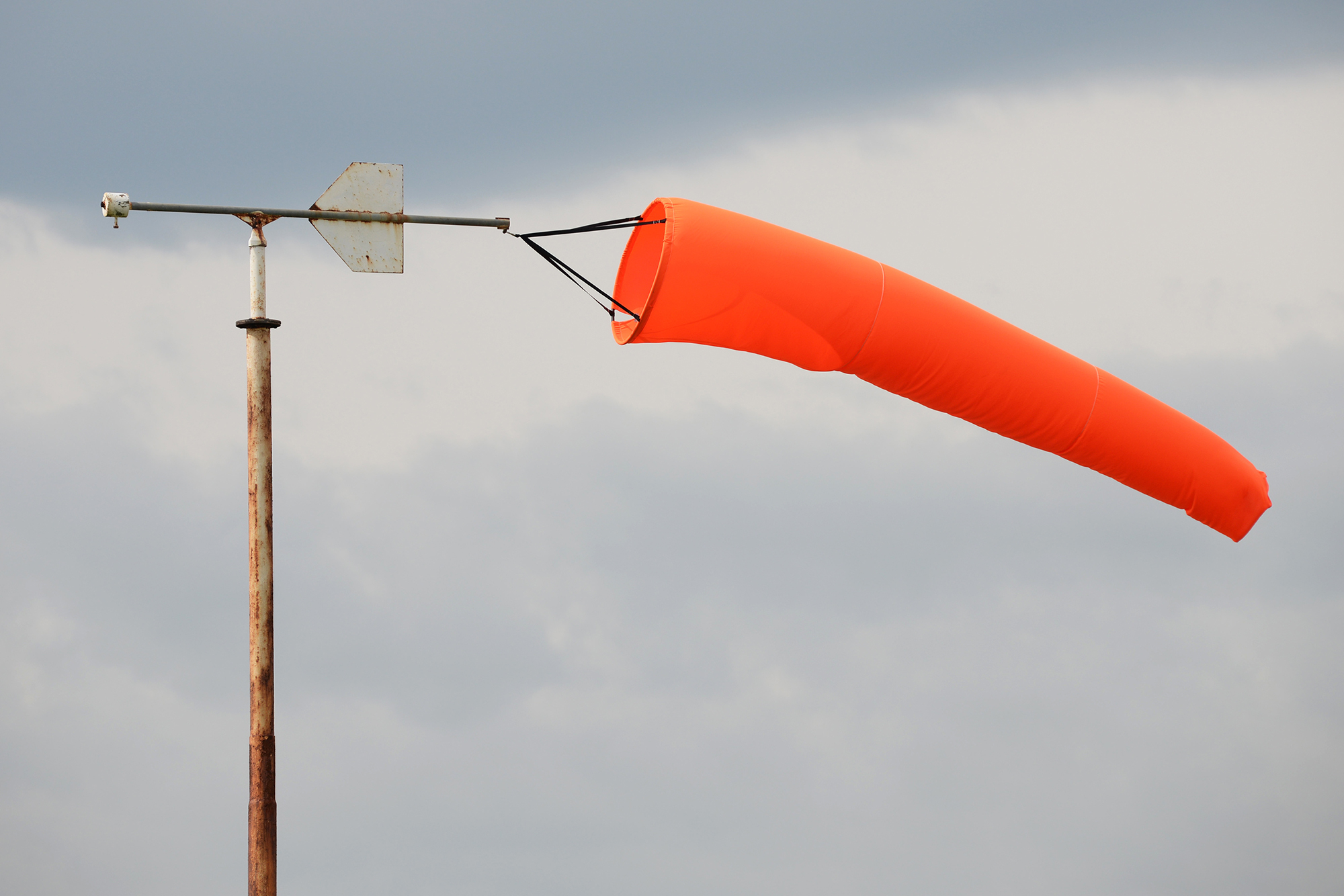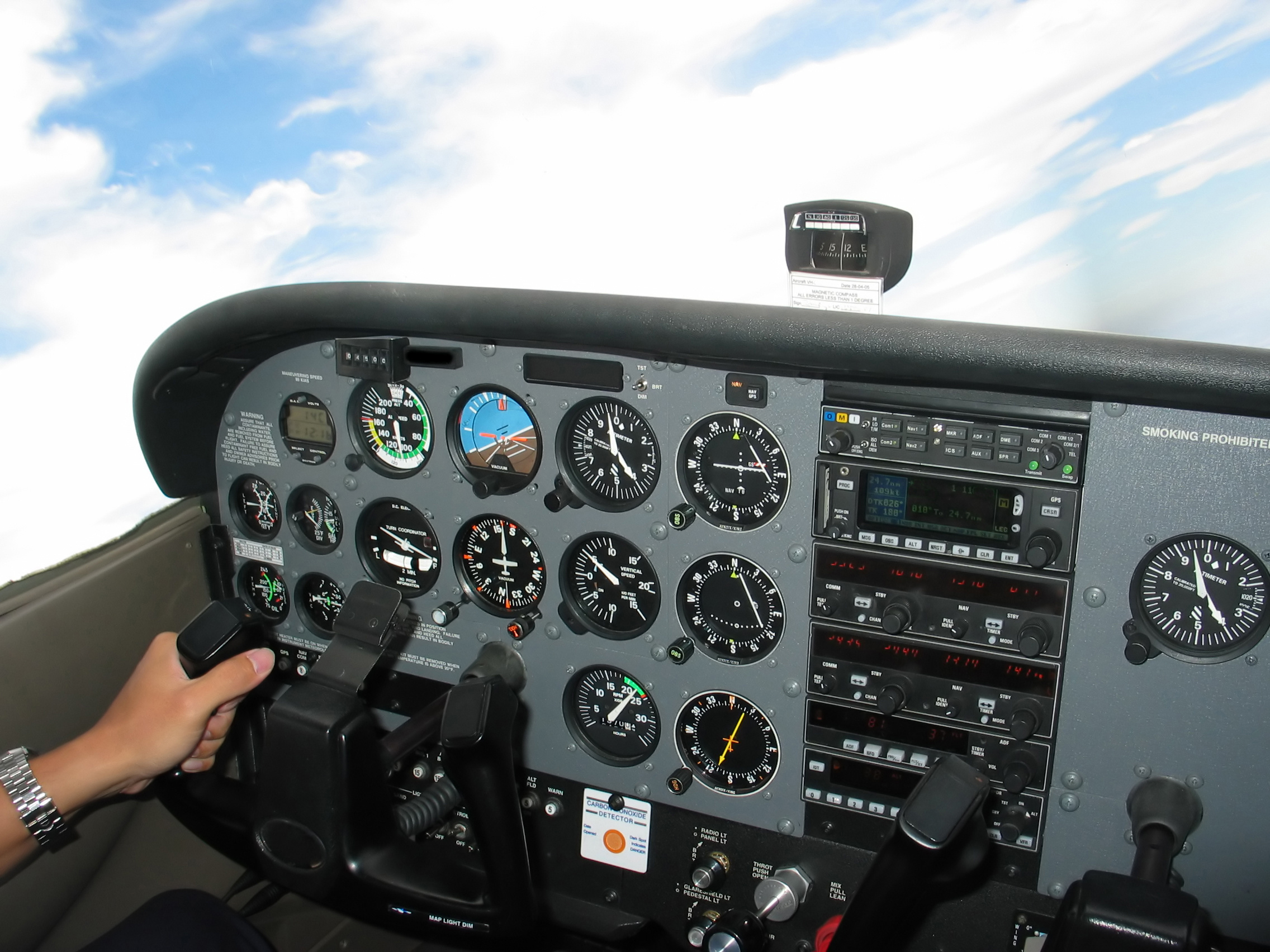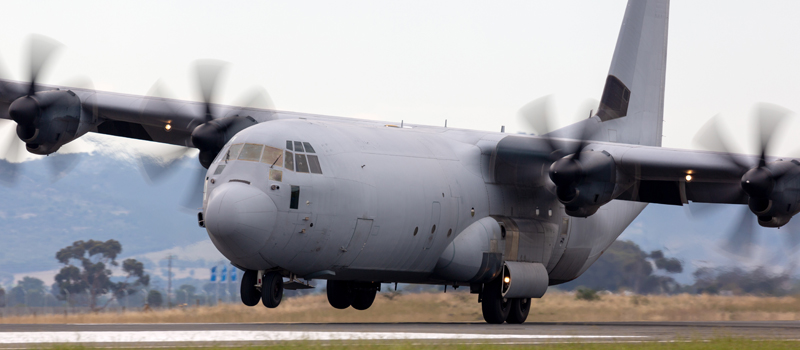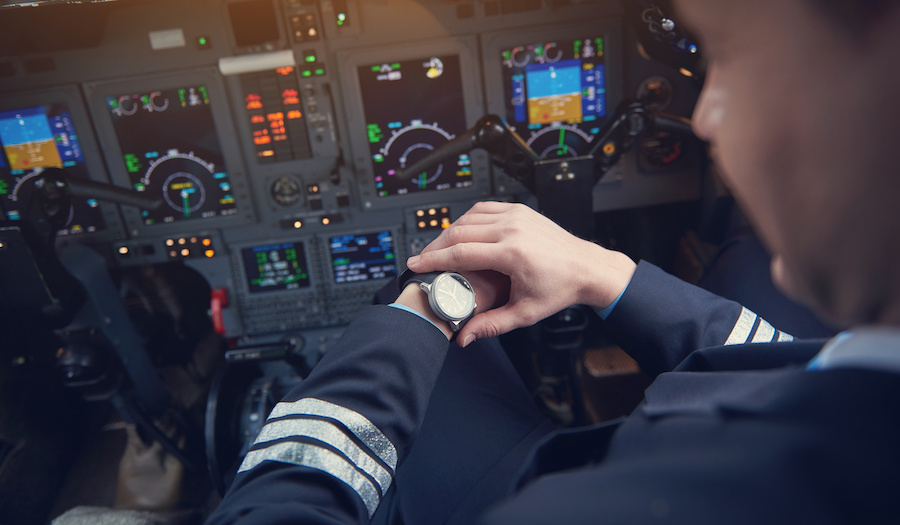-
Why is it Important to Make a Crosswind Estimate?
- Airframe Crosswind Limits
- Navigation
- Ease of Landing
-
Sources of Crosswind Information
- The Windsock
- Tower Wind
- ATIS
- Drift Angle
-
Understanding Crosswinds
- The Stronger the Wind, The Greater the Effect
- The Larger the Angle, The Greater the Effect
- The Slower the Aircraft, The Greater the Effect of Crosswind
-
How do You Calculate Crosswind? By Using Geometry!
- What does Sineθ Mean?
-
2 Easy Solutions to Estimate Crosswind
- The 'Clock' Method
- Using the Direction Indicator as a Scale
-
Final Thoughts
In an ideal world, we would fly in still air conditions all the time. However, obviously, this is not the case. The wind changes and varies from day to day and sometimes can make flying more challenging. Crosswinds, in particular, can be tricky. Once you understand crosswinds, it gets a whole lot easier, which is why today, we will show you how to make crosswind estimates, so you know what you are dealing with.
Crosswind is the angular difference between the aircraft’s heading and the wind’s direction. The greater the angular difference, the greater the crosswind component. As long as you remember this simple rule, making a crosswind estimate becomes much easier.
Why is it Important to Make a Crosswind Estimate?
Why is it important to estimate the crosswind? Well, there are several reasons why you really need to consider it…
Airframe Crosswind Limits
Normally, crosswind can be countered by a mixture of using the aileron and the rudder during take-off and landing.
However…
If the crosswind component is too high, you can effectively ‘run out’ of control authority, meaning loss (and sometimes a significant loss) of lateral control.
Aircraft manufacturers test their aircraft in crosswind conditions and work out exactly when the aircraft will ‘run out of rudder’. They will then publish the figure in their aircraft flight manual as a maximum crosswind limit.
There is an excellent guide to how to take off in a crosswind here, and for landing here.
Navigation
Estimating the crosswind is also important when navigating. In fact, making a crosswind estimate may be your only option as the winds aloft change, as does the aircraft heading as you navigate a route.
It would be nice to simply point the aircraft at the place we wanted to go. However, with a crosswind, you will find that the longer you fly on a given heading, the greater your navigation error becomes should you fail to fly a corrected heading to account for the drift angle.
Ease of Landing
For new pilots, it may be the case that they have yet to develop the necessary motor skills to handle even mild crosswinds. As a result, it is far preferable to land into a nice stiff headwind.
By learning to make a crosswind estimate early on, student pilots will be better positioned to decide on the best runway to use.
Sources of Crosswind Information
Knowing where to find wind information is the first step in making a crosswind estimate. Here are some great sources to work out where the wind is coming from and its strength.
The Windsock

The airfield windsock is one of the most reliable ways to work out the wind. And it doesn’t just indicate direction either!
The stripes on a windsock can actually give you a good indication of the wind’s strength, too, as the sock is specially calibrated.
To learn more about reading windsocks, check out our guide here.
Tower Wind
Giving the wind is something that air traffic control will do almost constantly and will certainly be relayed to you as part of your landing clearance.
The tower is packed with instruments that take wind readings from all over the airfield from devices called anemometers. These are fed to computer systems in the tower that can offer a wealth of useful data which you can request, including: –
- Headwind component
- Tailwind component
- Crosswind component
- Gust strength
- Average wind speed and direction
- Trend data (useful if the wind is too strong at present, but you want to know if it is weakening)
ATIS
The Automated Terminal Information Service (or just ‘ATIS) for short is a great place to find wind data. Particularly around airports and airfields.
This pre-recorded message is updated every hour or when there is a significant change in the weather. You can listen to the ATIS by tuning it in on a VHF radio.
Drift Angle
If you notice that while your aircraft is pointing one way, but you seem to be going another, there is a strong chance there is a crosswind.
You can make a crosswind estimate with a surprising degree of accuracy using a little math and pinpointing your position on a map.
Understanding Crosswinds

To make a crosswind estimate, you must understand the concept of crosswinds and how they work generally. Here is a quick guide to a few simple concepts: –
The Stronger the Wind, The Greater the Effect
It stands to reason that there will be no crosswind in still air. It should also be obvious that the stronger the wind, the greater the crosswind effect.
Imagine rowing a boat between two points across two different rivers. One fast-flowing (representing high winds) and the other relatively still (representing calmer winds).
Which do you think would require the greatest effort and offset to hit the correct point on the opposite bank?
It works exactly the same with crosswinds when flying an aircraft.
The Larger the Angle, The Greater the Effect
The wind is only a crosswind when there is a sideways element. If you are flying nose into a strong headwind and then turn 90 degrees, suddenly you have a strong crosswind!
The wind hasn’t changed in direction or strength, but your heading has. Where you point, the aircraft directly influences the crosswind component.
Remember this concept, as it will come in handy later when making a crosswind estimate.
The Slower the Aircraft, The Greater the Effect of Crosswind
If an aircraft flies faster, the wind has less time to act upon it. Conversely, when the aircraft flies slower, the crosswind will have a greater effect on its course. Again, thinking of our fast-flowing river analogy, which boat would need to compensate for the effects of sideways flow more? A speedboat? Or a rowboat?
How do You Calculate Crosswind? By Using Geometry!
Here comes the science bit. Concentrate!
If you want the geometric way of making a crosswind estimate, here it is.
The crosswind component is the speed of the wind, multiplied by the Sine of the angular difference between the wind direction and aircraft heading.
Written as a formula, it looks like this: –
(XWC = V × Sineθ).
Where XWC is the crosswind component. V is the wind speed, and Sineθ is the angular difference between where you are pointing and where the wind is coming from.
XWC and V are simple terms to understand. Sineθ, on the other hand, is the part that frightens most people.
We are about to make it easy, and then you can apply this knowledge to make a crosswind estimate.
What does Sineθ Mean?
In simple terms, Sine is a ratio used in trigonometry (the study of angles). Like most ratios, it can be expressed in several forms. The usual convention is to display it either as a fraction or a decimal.
The decimal form is the most useful. It literally tells us how much of the crosswind component affects our aircraft as a percentage.
This magnitude of this decimal (and therefore the percentage of crosswind) changes depending on increases in angular difference.
Without getting into complex trigonometry and math, here’s the basic concept.
With an increase in angular difference, the percentage increases. At its lowest (0 degrees), its effect is zero. At its highest (90 degrees), its effect is 1 (or ‘100%’ if you prefer).
It is important to note that it is not a linear change. Half of 90 degrees does not equal a sine decimal of 0.5 or 50%!
Here’s a quick table to demonstrate this concept.
| Angular difference (between aircraft and wind direction) | Sineθ (expressed as a decimal) |
| 0° | 0 (zero) |
| 10° | 0.17 |
| 20° | 0.43 |
| 30° | 0.5 (half) |
| 40° | 0.64 |
| 50° | 0.76 |
| 60° | 0.86 |
| 70° | 0.93 |
| 80° | 0.98 |
| 90° | 1.00 |
How is all of this relevant to making a crosswind estimation?
Well, use the above table and plug in a few numbers.
Let’s say we were flying on a heading of 010°, and the wind was coming from 050° at a strength of 30 knots.
We can now use the above formula (XWC = V × Sineθ) to estimate the crosswind. Let’s change letters for numbers using the above table…
The angular difference between our heading and the wind direction is 40°, the Sine of which is 0.64, so our equation would look like this: –
XWC = 30 knots x 0.64… Giving an answer of 19.2! The actual strength of the crosswind is around 19 knots, or to put it another way, 64% of the wind speed.
Now, you might think that this looks complicated, and we certainly don’t want to become math majors while buzzing around in the sky. It is important to understand the concept of the above only.
Why?
Here’s the good news.
There is an easier way…
2 Easy Solutions to Estimate Crosswind

Fortunately, you don’t need to be this century’s Pythagoras to make a crosswind estimate. Instead, we’ll use an understanding of the concept above to give you a couple of simple ‘tools in your flight bag’ that work just as well when making a crosswind estimate.
The ‘Clock’ Method
You aren’t going to have to remember all of the sine decimals and ratios… Provided you can remember what a clock face looks like, it corresponds roughly to the above table. Here’s how pilots do it in a few simple steps: –
- Find the wind speed and direction
- Calculate the difference between the aircraft heading and the wind direction and note this to the nearest 15 degrees.
- Imagine a clock face, 15 minutes would represent a quarter, 30 minutes a half, 45 minutes three quarters, and 60 minutes is a full hour.
- Replace the word ‘minutes’ with the previously calculated angular difference in degrees.
- Apply the resulting proportion to the wind speed.
Here’s a quick table so you can easily envisage it. Note how it pretty closely resembles the associated sineθ from the above chart: –
| Difference between heading and wind | Crosswind component (roughly) | Actual sineθ |
| 15° | A quarter of wind speed | 0.25 |
| 30° | Half of wind speed | 0.5 |
| 45° | Three-quarters of wind speed | 0.70 |
| 60° | Assume full crosswind speed | 0.86 |
Using the Direction Indicator as a Scale
This is my favorite method and works really well for those more visually oriented.
Using the direction indicator (DI), you can make a good general crosswind estimate quickly and easily. This is also a good situational awareness tool as it allows you to envisage where the wind is coming from.
Here’s how to do it.
- Once aligned on your heading, make a note on the DI of which bearing the wind is coming on the outer bezel of the instrument.
- Draw an imaginary horizontal line through the center of your DI. From the point in step 1, drop a line straight down until it intersects this horizontal line and makes a mental note of where it intersects.
This horizontal line represents the strength of the wind. It’s like a scale for wind speed. The center of the instrument is zero. The furthest edge of the instrument is maximum speed. Halfway between the center and the edge is 50% wind speed.
- You’ll note that the further the wind comes from around the instrument, the later towards the edge your vertical line will intersect the horizontal ‘scale’. You can use where the imaginary vertical line intersects the horizontal line to estimate the crosswind component.
Final Thoughts
While the two above methods might seem a little ‘agricultural’, they are techniques that even airline pilots use. The wind is rarely constant in either speed or direction, so you don’t have to make a crosswind estimate that is accurate to within a fraction of a knot. Close enough is good enough for most pilots.
If you are worried that you are approaching the limit of your aircraft (or your own personal ability) based on your crosswind estimate, it is probably time to consider choosing a different location or runway. Or alternatively, practice your crosswind landings! Here’s a great guide on the correct technique.

 @pilotinstituteairplanes
@pilotinstituteairplanes


